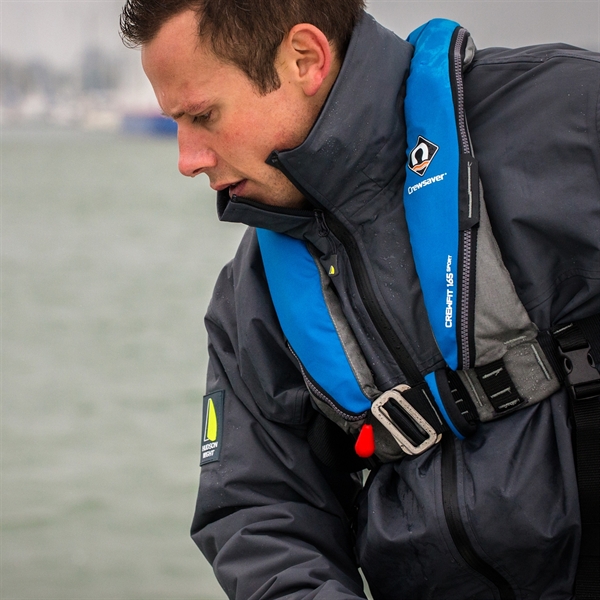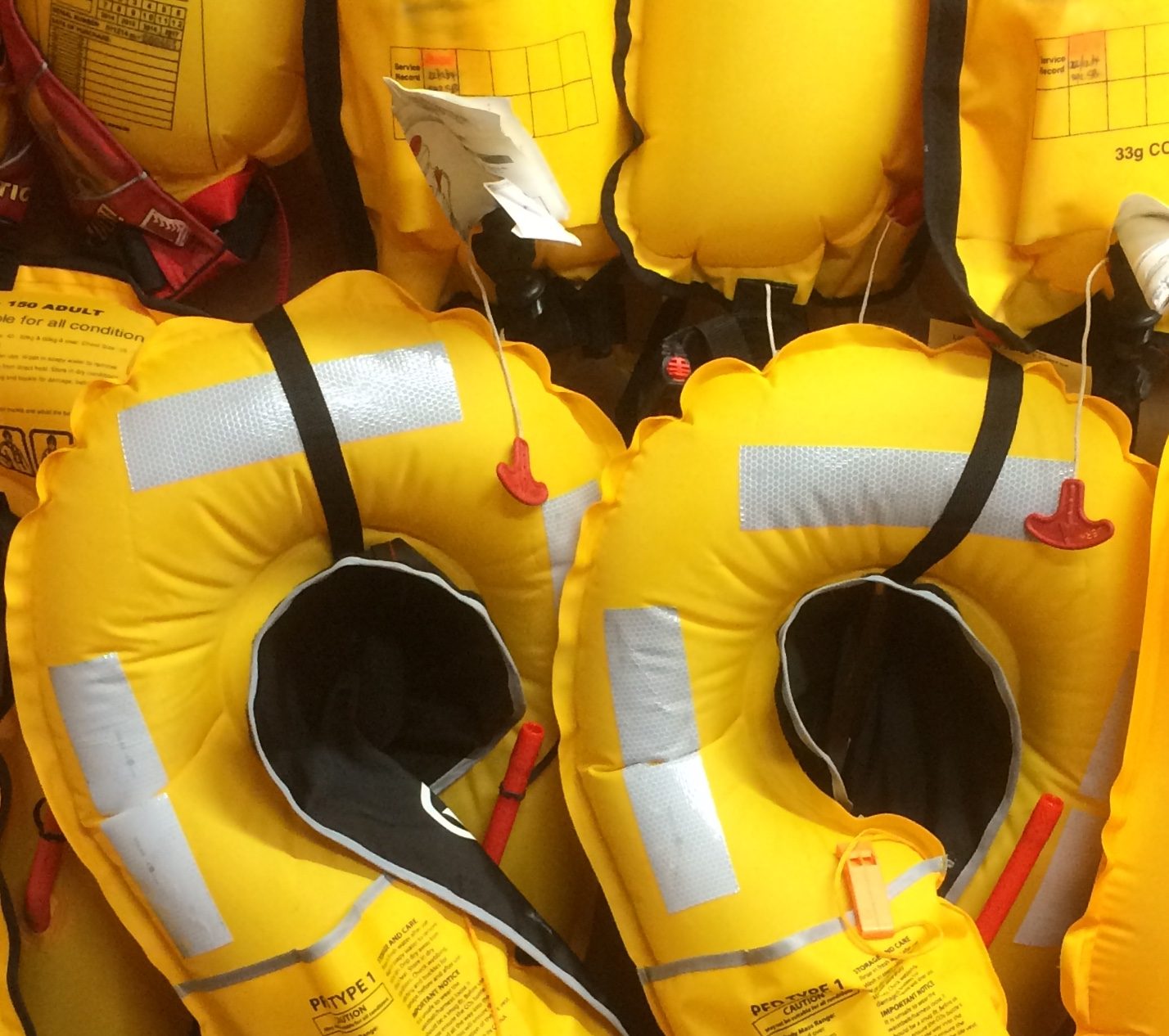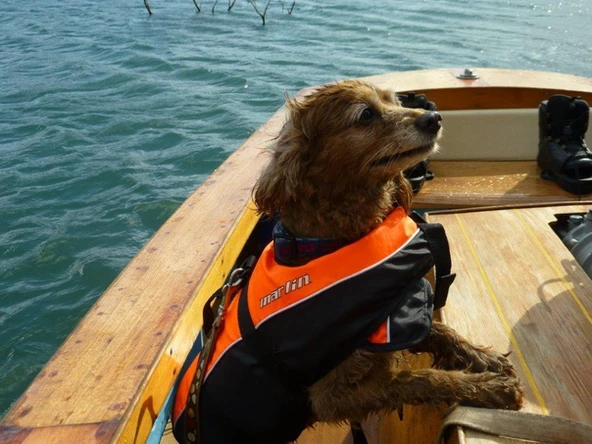Services
Marine Safety Equipment & More
Sussex Marine can help with all your boating safety needs. As well as servicing inflatable lifejackets, we service Dan Buoys and recreational life rafts seating up to four people. We are also a boatcode agency and an online marine retailer selling boat safety equipment and general boat chandlery. A large part of what we offer is advice and education. Ultimately, we want all recreational boat users to understand the importance of annual lifejacket servicing and HIN/Boatcode requirements. Our qualified staff are experienced and knowledgeable about boat safety, so talk to us today. We are here to help!
Inflatable LifeJacket Servicing
Inflatable lifejackets, whilst being more comfortable and easier to wear than older style “block foam” or “rigid” life jackets will need regular servicing in accordance with the manufacturer’s recommendations. Sussex Marine is an accredited Lifejacket Service Centre and can service and certify most major brands of inflatable lifejacket.
Servicing starts from as little as $38 inc GST.
We can arrange Lifejacket Service, PFD Service, Inflatable Lifejacket Service at one of our many collection points through NSW.
Please email us at info@sussexmarine.com.au for more information.
What lifejacket am I required to wear on my recreational vessel?
View LifeJacket Requirements Table
| Boating Activity / Vessel Type | Situation | Lifejacket Options |
|---|---|---|
| Children under 12 years of age | At all times in a vessel under 4.8m When in an open area of a vessel 4.8m to 8m that is underway |
|
| – On enclosed waters | Level 100+, Level 50 or level 50S (also known as Type 1, 2 or 3) | |
| – On open (ocean) waters | Level 100+ (also known as Type 1) | |
| – On alpine waters | Level 100+, Level 50 or level 50S (also known as Type 1, 2 or 3) | |
| On all,boats less than 4.8m (unless specified below) | All occupants on enclosed waters when: | |
| – Boating at night | Level 100+, Level 50 or level 50S (also known as Type 1, 2 or 3) | |
| – Boating alone (without an accompanying adult, licenced person or support vessel) | Level 100+, Level 50 or level 50S (also known as Type 1, 2 or 3) | |
| – At all times on open waters | Level 100+ (also known as Type 1) | |
| – At all times on alpine waters | Level 100+, Level 50 or level 50S (also known as Type 1, 2 or 3) | |
| – When none of the situations above apply then at all times if the vessel is used more than 200m from shore on enclosed waters to transport people or goods between the shore and a vessel, or between vessels. | Level 100+, Level 50 or level 50S (also known as Type 1, 2 or 3) | |
| All Towing | Anyone being towed at all times on all waters | Level 100+, Level 50 or level 50S (also known as Type 1, 2 or 3) |
| Canoes and kayaks | – On enclosed waters more than 100m from shore | Level 100+, Level 50 or level 50S (also known as Type 1, 2 or 3) |
| – On open waters at all,times | Level 100+, Level 50 or level 50S (also known as Type 1, 2 or 3) | |
| – On alpine waters at all,times | Level 100+, Level 50 or level 50S (also known as Type 1, 2 or 3) | |
| – On white waters at all,times | Level 100+, Level 50 or level 50S (also known as Type 1, 2 or 3) | |
| Off the beach sailing vessel(e.g. catamaran & centreboard boats) | – All occupants on openwaters at all times – All occupants on alpine waters at all times |
Level 100+ or Level 50 (also known as Type 1 or 2) Level 100+, Level 50 or level 50S (also known as Type 1, 2 or 3) |
| Sailboarding | When more than 400m from shore: | |
| – On enclosed and alpine waters | Level 100+, Level 50 or level 50S (also known as Type 1, 2 or 3) | |
| – On open waters | Level 100+ or Level 50 (also known as Type 1 or 2) | |
| Kiteboarding | When more than 400m from shore & kiting alone: | |
| – On any waters | Level 100+, Level 50 or level 50S (also known as Type 1, 2 or 3) | |
| PWC (jetski) | – On enclosed or alpine waters at all times | Level 100+, Level 50 or level 50S (also known as Type 1, 2 or 3) |
| – On open waters at all times | Level 100+ or Level 50 (also known as Type 1 or 2) | |
| – Tow-in-surfer on open waters | Level 100+, Level 50 or level 50S (also known as Type 1, 2 or 3) | |
| Crossing coastal bars | All vessels, everyone on board | Level 100+* (also known as Type 1) |
| Skipper’s responsibility | When the skipper considers a “heightened risk”** situation exists: | |
| – On enclosed and alpine waters | Level 100+, Level 50 or level 50S (also known as Type 1, 2 or 3) | |
| – On open waters | as required elsewhere in table for particular vessel type. | |
**The concept of “heightened risk” is an extension of the current situation regarding crossing coastal bars (an inherently risky activity). A time of heightened risk is any time when there is a greater risk of either an incident occurring or if an incident was to occur when it might be difficult to help yourself.
- boating in bad weather (such as in a gale warning, storm warning, severe thunderstorm warning or other severe weather warning issued by the Bureau of Meteorology);
- when a yacht does not have safety barriers, lifelines, rails, safety harnesses, or jacklines in use;
- boating by the elderly, non-swimmers, and people with serious medical conditions;
- when the vessel has broken down;
- when there is a significant likelihood that the vessel may be capsized or swamped by waves or the occupants of the vessel may fall overboard or be forced to enter the water;
- and other similar circumstances.
This makes it clear that the skipper has a high level of responsibility
Lifejacket Carriage
It is a legal requirement that most recreational vessels in NSW must carry an appropriate size and type of lifejacket for each person on board. They must be stored or placed to allow quick and easy access. Lifejackets must be either visible to passengers, or their location clearly marked by an unobstructed and clearly visible sign saying LIFEJACKETS (red lettering on a white background or white lettering on a red background).
Open Waters
Unless there is a requirement that a lifejacket must be worn, a lifejacket Level 100+ (also known as Type 1) must be carried for everyone on board for all vessels.
Enclosed Waters (excluding Alpine waters)
Unless there is a requirement that a lifejacket must be worn, a lifejacket Level 100+, Level 50 or Level 50S (also known as Type 1, 2 or 3) must be carried.
Alpine Waters
Unless there is a requirement that a lifejacket must be worn, a lifejacket Level 100+, Level 50 or Level 50S (also known as Type1, 2 or 3) must be carried.
Lifejacket Servicing
Inflatable Lifejackets must be serviced in accordance with manufacturers instructions. See Inflatable Lifejacket Servicing for more information.
Crossing Coastal Bars
Lifejackets must be worn at all times when crossing Coastal Bars.
Self Certification Advice
Some manufacturers allow you to ‘self service’ your lifejacket, provided you do so in accordance with their instructions.
If the manufacturer allows self servicing you should make sure you have the necessary ability, knowledge and skill before attempting this, otherwise we recommend you get it serviced professionally.
This is a higher level of inspection and replacement of parts that exceeds routine cleaning and checking. If you are self servicing a lifejacket, follow the manufacturer’s instructions carefully and make sure the recharge kit matches your lifejacket.
The self servicing of a lifejacket is only valid if the manufacturer allows it and if you keep all servicing receipts and certificates of servicing as documentary evidence of the service occurring. Failure to do so makes verifying servicing impossible, which means you may be in breach of safety requirements and be placing yourself, your family or friends at risk.
More Information
Please use the links below if you require more information about regulations regarding life jackets and marine safety.
Maritime Safety Equipment Check List
Legislation
Life Jacket Information



